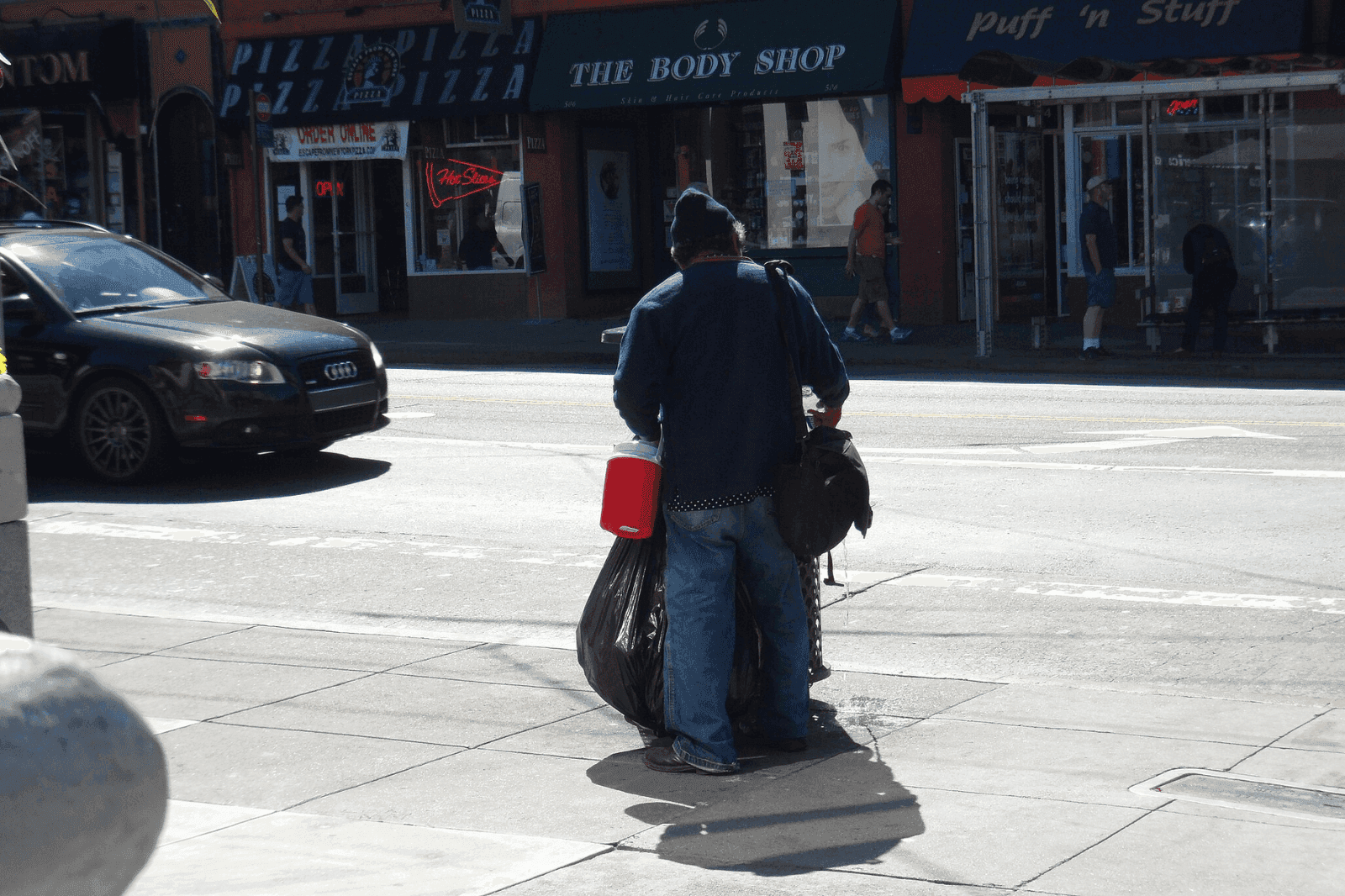
News
By Heidi Simon, September 4, 2024
A recent response to the traffic safety crisis in New Mexico was yet another example of the status quo approach of criminalizing individual behavior—particularly the behavior of the most vulnerable—in an effort to make the full system safer. It's time for a better approach.

In our recent release of Dangerous by Design, we highlighted the trends of rising pedestrian fatalities among low-income communities. The numbers are striking in how they demonstrate the way safety is granted to those who can afford it. This has been on our minds in recent weeks due to the proposed New Mexico state legislation to criminalize panhandling as a strategy to address pedestrian safety.
Though thankfully this legislation did not pass, it was telling that in the face of a clear and present danger, the governor chose to devote time and resources to focus on an approach that has failed us over and over again: honing in on individual behavior (and in particular placing the responsibility on those outside of cars), instead of addressing the safety of the entire system with data-proven countermeasures. In Dangerous by Design, we highlighted how unsafe street design adds to the pedestrian safety crisis, leading to faster vehicle speeds, fewer opportunities to bike and walk, and increased risk of fatalities when crashes occur.
There is a clear need to address the pedestrian safety crisis in New Mexico. The state ranks as the #1 most deadly state for people walking with an astonishing 65 percent jump in deaths from 2013 to 2022. Albuquerque, NM, is the second deadliest metro area for people walking in the country with 221 people hit and killed while walking between 2018 and 2022. Advocates across the city have been calling for change, especially around known high-crash corridors, but action has been sporadic at best.
The trends in New Mexico, reflective of ever-rising pedestrian fatalities across the nation, are unacceptable—not only because each life lost leaves behind grieving families and communities, but because pedestrian deaths are preventable, and there is a vast amount of research on how to prevent them. It is unacceptable that the pedestrian safety crisis proves just how our communities and the nation at large are continuing to fail those of us who need support the most.
People who are unhoused are likely more at risk of being killed as they often represent a range of vulnerable populations. A recent report from the Federal Highway Administration noted that Black, African American, or African people; indigenous people; people over the age of 55; and people with disabilities are all more likely to be unhoused. These groups are also more likely to be hit and killed while walking according to federal data. However, because federal data fails to track the number of victims who are unhoused, it fails to reveal the full extent of this problem. As the number of unhoused people rose by 12 percent from 2022 to 2023, roughly 70,650 more people, it is more important than ever that we understand the risks they face while they travel.
Regardless of status in housing or employment, people should be able to safely navigate and experience their communities with a certain level of trust that they will not suffer serious harm or injury while doing so. New Mexico’s previously proposed legislation highlights how failures across multiple intersecting systems—transportation, housing, and social services—compound on community members with devastating results. Rather than using the data to better understand the risks felt by a particular group and address their root causes, the New Mexico governor attempted to regulate how a vulnerable population uses New Mexico streets. We've seen this reaction time and time again as we grapple with the roadway safety crisis.
“The panhandling legislation was a ‘false solution’ and didn’t address the root causes of homelessness and poverty in our communities,” said Christopher Ramirez, Executive Director of Together for Brothers, a community organization in Albuquerque led by boys and young men of color. The organization has worked to advance transit equity since 2017. “Our efforts have to center people experiencing homelessness so that they can travel safely, which will also make all of us safer in Albuquerque.”
We hope that other state legislatures will take note of the dialogue that took place in New Mexico and the decision to not adopt the proposed legislation. Instead, they should take steps to address the likely heightened vulnerability of people experiencing homelessness and make efforts to protect them. At the same time, we hope decision-makers recognize that spending time and effort around a policy that would penalize some of a state’s most vulnerable members not only does little to address the crisis but distracts from efforts that could actually make substantive improvements.
Until we put a concerted effort into creating environments where people can be safe on our streets, whether they are walking, driving, biking, roller-blading, or standing still, we cannot expect any traffic safety initiatives to be as successful as they need to be. We look forward to seeing future efforts from New Mexico to address roadway safety at a holistic level, including through changes to dangerous street design.
Related News

© 2025 Smart Growth America. All rights reserved
Site By3Lane Marketing












